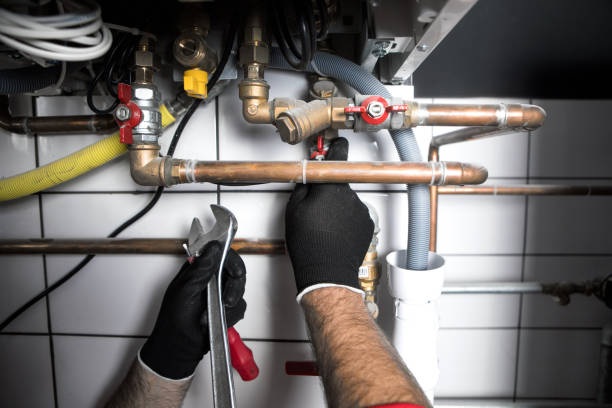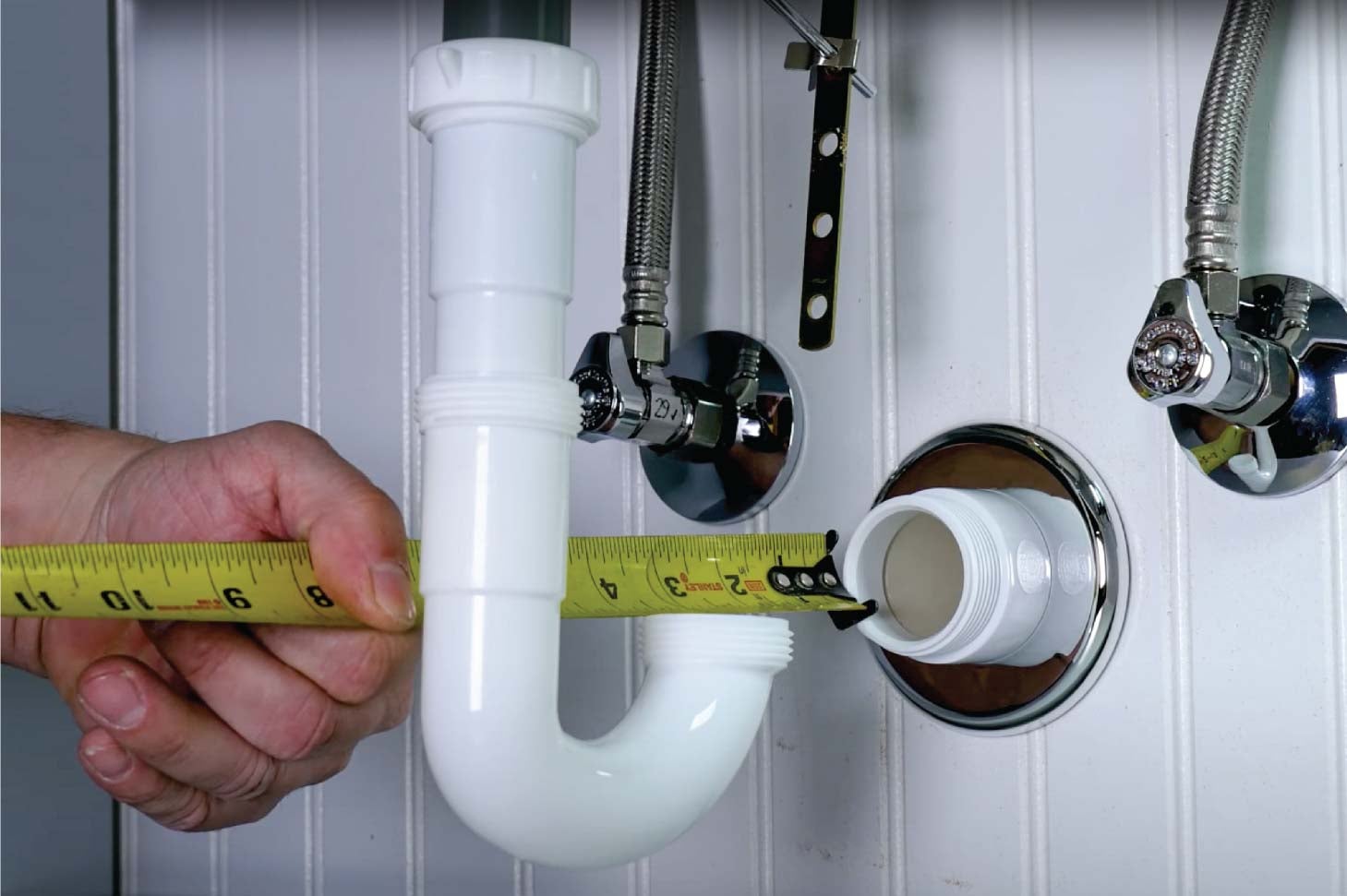Exploring The Layout of Your Property's Plumbing System
Exploring The Layout of Your Property's Plumbing System
Blog Article
What are your opinions about Understanding Your Home's Plumbing Anatomy?

Comprehending just how your home's plumbing system functions is necessary for every property owner. From supplying clean water for alcohol consumption, food preparation, and bathing to safely getting rid of wastewater, a well-maintained plumbing system is critical for your family's health and wellness and convenience. In this comprehensive guide, we'll discover the intricate network that makes up your home's pipes and deal tips on maintenance, upgrades, and managing usual issues.
Introduction
Your home's pipes system is greater than simply a network of pipes; it's a complicated system that ensures you have access to clean water and effective wastewater elimination. Knowing its components and exactly how they collaborate can aid you prevent costly repair work and make sure every little thing runs efficiently.
Basic Elements of a Pipes System
Pipelines and Tubes
At the heart of your pipes system are the pipelines and tubing that carry water throughout your home. These can be made of various materials such as copper, PVC, or PEX, each with its benefits in regards to longevity and cost-effectiveness.
Components: Sinks, Toilets, Showers, and so on.
Components like sinks, bathrooms, showers, and bathtubs are where water is used in your home. Recognizing just how these components link to the plumbing system helps in detecting troubles and preparing upgrades.
Valves and Shut-off Points
Shutoffs regulate the circulation of water in your plumbing system. Shut-off valves are crucial throughout emergency situations or when you need to make repairs, permitting you to separate parts of the system without interrupting water flow to the whole residence.
Water System System
Main Water Line
The main water line attaches your home to the local supply of water or a private well. It's where water enters your home and is dispersed to different fixtures.
Water Meter and Stress Regulatory Authority
The water meter steps your water use, while a stress regulator ensures that water moves at a risk-free pressure throughout your home's pipes system, avoiding damage to pipelines and fixtures.
Cold Water vs. Warm water Lines
Comprehending the distinction in between cold water lines, which provide water directly from the main, and warm water lines, which carry warmed water from the water heater, helps in fixing and planning for upgrades.
Water drainage System
Drain Piping and Traps
Drain pipelines carry wastewater far from sinks, showers, and toilets to the sewage system or sewage-disposal tank. Catches avoid sewer gases from entering your home and likewise trap particles that could trigger clogs.
Air flow Pipes
Air flow pipes enable air into the drain system, preventing suction that might slow drain and cause traps to vacant. Appropriate air flow is important for keeping the integrity of your pipes system.
Importance of Appropriate Drainage
Guaranteeing correct drainage stops backups and water damage. Consistently cleaning drains and keeping traps can stop pricey repair work and extend the life of your pipes system.
Water Furnace
Types of Hot Water Heater
Hot water heater can be tankless or conventional tank-style. Tankless heating units warmth water on demand, while storage tanks save heated water for instant usage.
Updating Your Plumbing System
Reasons for Updating
Updating to water-efficient fixtures or replacing old pipelines can boost water quality, decrease water expenses, and raise the value of your home.
Modern Plumbing Technologies and Their Benefits
Check out technologies like smart leak detectors, water-saving bathrooms, and energy-efficient hot water heater that can save money and decrease ecological influence.
Price Considerations and ROI
Calculate the in advance expenses versus lasting financial savings when considering plumbing upgrades. Numerous upgrades spend for themselves with lowered energy bills and fewer repairs.
Exactly How Water Heaters Link to the Pipes System
Comprehending just how hot water heater attach to both the cold water supply and hot water distribution lines helps in diagnosing issues like inadequate hot water or leaks.
Maintenance Tips for Water Heaters
Frequently flushing your water heater to eliminate sediment, inspecting the temperature settings, and checking for leaks can prolong its life expectancy and enhance energy effectiveness.
Typical Plumbing Problems
Leaks and Their Causes
Leaks can occur because of aging pipes, loose fittings, or high water pressure. Addressing leakages without delay protects against water damages and mold and mildew development.
Blockages and Obstructions
Clogs in drains and toilets are usually brought on by purging non-flushable products or an accumulation of grease and hair. Using drainpipe displays and bearing in mind what decreases your drains can prevent obstructions.
Indicators of Pipes Issues to Watch For
Low tide stress, sluggish drains, foul odors, or unusually high water costs are indicators of prospective plumbing troubles that must be dealt with promptly.
Pipes Upkeep Tips
Regular Inspections and Checks
Set up yearly plumbing inspections to catch concerns early. Try to find signs of leakages, rust, or mineral accumulation in taps and showerheads.
Do It Yourself Maintenance Tasks
Straightforward jobs like cleaning tap aerators, looking for toilet leakages utilizing dye tablet computers, or protecting exposed pipelines in cold environments can stop major pipes issues.
When to Call a Specialist Plumbing Technician
Know when a plumbing concern needs professional experience. Attempting complex repair services without proper expertise can result in even more damage and greater repair work prices.
Tips for Minimizing Water Usage
Basic habits like taking care of leaks immediately, taking shorter showers, and running complete loads of laundry and recipes can save water and reduced your utility costs.
Eco-Friendly Plumbing Options
Think about lasting plumbing products like bamboo for flooring, which is durable and environment-friendly, or recycled glass for kitchen counters.
Emergency Readiness
Steps to Take During a Pipes Emergency
Know where your shut-off shutoffs lie and exactly how to switch off the water supply in case of a ruptured pipeline or major leakage.
Relevance of Having Emergency Get In Touches With Convenient
Keep get in touch with details for local plumbing technicians or emergency services easily offered for quick action throughout a plumbing dilemma.
Ecological Impact and Conservation
Water-Saving Components and Appliances
Mounting low-flow taps, showerheads, and toilets can substantially lower water use without sacrificing performance.
Do It Yourself Emergency Situation Fixes (When Applicable).
Short-term fixes like making use of duct tape to spot a leaking pipeline or placing a container under a dripping tap can decrease damage until an expert plumbing technician gets here.
Verdict.
Understanding the anatomy of your home's plumbing system equips you to preserve it properly, conserving money and time on repairs. By following regular maintenance routines and staying informed about modern plumbing technologies, you can ensure your plumbing system operates effectively for many years to find.
The Anatomy of Your Home s Plumbing System
Understanding the anatomy of your home s plumbing system is essential for any homeowner. It not only helps in identifying potential issues but also facilitates effective communication with professionals when repairs or upgrades are needed. Your home s plumbing system is more than just pipes and faucets; it s a complex network that ensures the efficient and hygienic flow of water in and out of your house. In this blog, we ll dissect the crucial components of your home s plumbing system. For those in Antelope Valley, Brock Plumbing is your trusted partner for all your plumbing needs, ensuring your system functions smoothly and efficiently.
Water Supply System
Main Water Line: This is where your home s plumbing system begins. The main water line connects your home to the public water supply or a private well. Pipes and Shut-off Valves: Pipes distribute water throughout your home. Shut-off valves are crucial for controlling the flow of water and making repairs without shutting off the entire system. Drainage System
Drain Pipes: These pipes carry waste and water away from sinks, toilets, and showers. Vents: Vents allow sewer gases to escape and help maintain proper pressure in the drainage pipes, ensuring efficient flow of wastewater. Traps: Every fixture has a trap, a U-shaped pipe that holds water and prevents sewer gases from entering your home. The most common is the P-trap under sinks. Fixtures and Appliances
Fixtures and appliances are the most interacted with parts of your plumbing system. They include sinks, toilets, showers, dishwashers, and washing machines. Each fixture and appliance has its own supply and drainage connection, ensuring they receive clean water and can dispose of wastewater effectively.
Water Heating System
Your water heater is a crucial component, providing hot water to various fixtures and appliances in your home. It can be tank-based or tankless, with each type having its own set of advantages and maintenance requirements. Regular maintenance is essential to ensure efficient operation and extend the lifespan of the unit.
Sump Pump
In areas prone to flooding or with high water tables, a sump pump is an essential part of the plumbing system. It s installed in the lowest part of your basement or crawlspace and pumps out water that accumulates, preventing flooding and protecting your home from water damage.
Septic System
Homes that are not connected to a municipal sewer system have a septic system and an underground wastewater treatment structure. Understanding how to maintain your septic system is crucial to prevent backups, odors, and early system failure.
Conclusion
Your home s plumbing system is a complex and essential network, ensuring the efficient and hygienic flow of water in and out of your property. Understanding its key components helps in maintaining it properly and identifying issues before they escalate into major problems. For residents in Antelope Valley, Brock Plumbing is dedicated to providing top-notch services, ensuring that every part of your plumbing system is in perfect working order. Trust our team of professionals to handle all your plumbing needs, ensuring your home remains comfortable, safe, and well-maintained.
https://brockplumbinganddrains.com/blog/the-anatomy-of-your-homes-plumbing-system/

I stumbled upon that entry about Understanding Your Home's Plumbing Anatomy when doing research the internet. Are you aware of another person who is fascinated by the niche? Do not hesitate to promote it. Thank-you for taking the time to read it.
Click Report this page